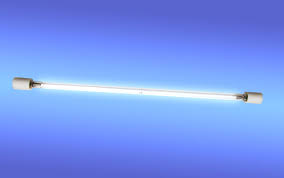Troubleshooting xenon lamps
A comprehensive troubleshooting guide for Xenon lamps. Here we go through different situations that can arise and give you tips.

Troubleshooting xenon lamps
Warning: Xenon lamps operate with a starting voltage of approximately 23,000 volts. Improper handling can cause serious bodily injury. Always work with the ignition off – we also recommend disconnecting the battery. Wear eye protection as the lamps are pressurized.
These tips apply to all xenon systems. Specific troubleshooting for retrofit xenon lamps (conversions from halogen) can be found further down.
Frequently asked questions
My one xenon bulb is pink and weak
The lamp is worn out and should be replaced. Always replace both lamps at the same time for consistent color and brightness.
The new lamp differs in color and strength from the old one
Xenon bulbs change color and brightness over time – this is normal. Replacement should be done in pairs.
One side does not light up
First check the lamp. If it is intact, the fault may be in the ballast or its power supply/grounding. Also check the fuses.
The filament is off – the lamp does not light
Xenon lamps do not have a filament. They operate via an electric arc – this method does not apply.
How do I know if the lamp or ballast is broken?
Try changing the position of the lamps. If the error moves, the lamp is defective. If the error remains – check the driver and power supply.
My drive unit has broken - why?
A common cause is substandard lamps. These can damage the driver. Moisture in the lamp can also damage the driver.
I have measured the lamp – no result
Measuring on the high voltage side is dangerous and should be avoided. Xenon lamps do not have a measurable resistance like halogen.
I am not getting any voltage from the driver.
The driver tries to light the lamp a few times – if it fails it turns off. Measurement is therefore misleading and dangerous.
The lamp has a colored, foggy mass in the glass ball
This is completely normal.
Which lamp is left/right?
Xenon lamps are symmetrical – it doesn't matter.
The lamp has cracked.
The glass body was probably touched with fingers during assembly. Always avoid direct contact.
Foggy coating in the headlight
Often due to the lamp being handled incorrectly during installation – the glass must not be touched.
Troubleshooting of retrofitted xenon lamps (xenon kit)
Can I inspect the car with retrofitted xenon lamps?
Low beam: Requires level adjustment & headlight washer – otherwise risk of a warning.
Fog lights: Not permitted according to the Swedish Motor Vehicle Inspection.
High beam & auxiliary light: Allowed – but the E-marking becomes invalid if modified.
The lights are flickering
Check power supply and grounding. Grounding should be done directly to the battery negative terminal.
The radio makes noise when the lights are on
Disconnect drivers one at a time to identify problems. Ferrite cores and better grounding can reduce interference.
Lanterns do not light after installation – part 1
A common fault is a wrongly connected low voltage connector. Turn it over – it will not damage the ballast.
Lanterns won't light up – part 2
Cable cross-section too small or faulty relays/fuses. Check connections.
I have 12V in the battery but the lights don't turn on.
12V means almost empty battery. A fully charged battery should have 12.7V.


